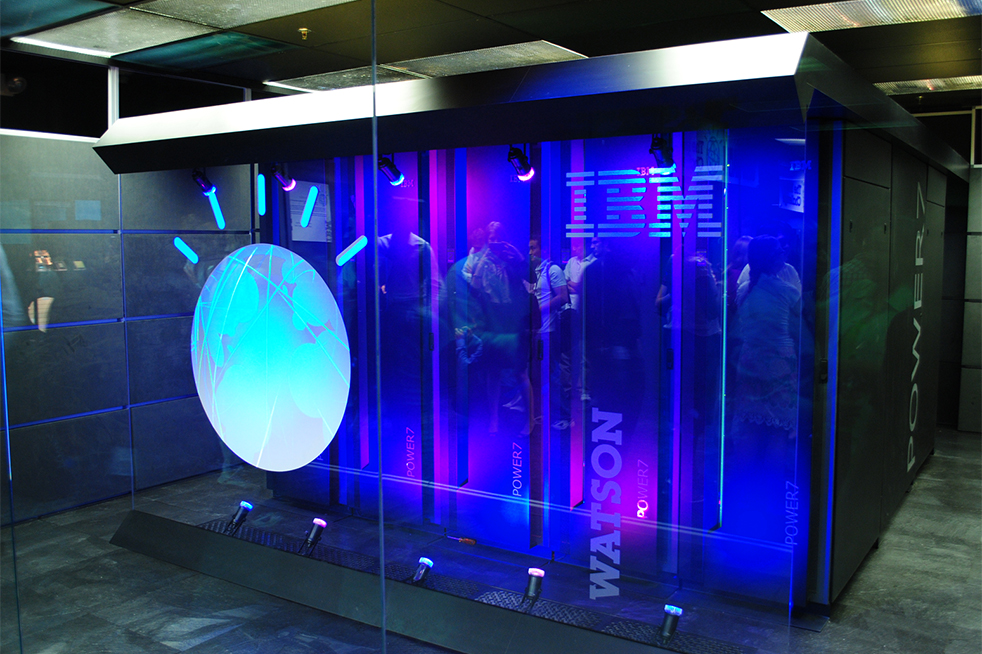IBM’s Watson, famous for beating top humans in Jeopardy!, will be used this semester in a Computer Science class as part of IBM’s Watson outreach.
Professor Ashok Goel’s computational creativity class at Tech was among those selected by IBM for the program. The class will use the supercomputer to aid in creating biologically inspired designs.
“I am very excited to have the opportunity to work with such impressive technology,” said Hans Bergren, a fourth-year CS major. “This is the first time Watson has been used for a college course, and being part of this trial is partially what drew me to the course.”
“I know all of us in the class are really excited about Watson,” said Sasha Azad, a CS master’s student. “We’ve read up and brushed up on the artificial intelligence behind Watson in almost every AI related class in Georgia Tech’s Fall semester.”
Watson is, in Professor Goel’s words, a “memory-based search engine.” It takes in an inquiry—in an example given by Goel, “how do I lift water 100 feet?” Watson then retrieves data in its system related to redwood trees. Watson is trained both to interpret the meaning of the inquiry and to retrieve information that is not obvious from a simple Google search, for example.
“So the students will be doing projects in invention like biologically inspired design,” Goel said. “So one of the students may come along and say, ‘Can we not harvest water from fog…?’ And so [the student] puts in this question into IBM Watson, and IBM Watson will come up with the answer, ‘Hey, there is an arrangement of hydrophilic surfaces that Namibian beetles use to harvest water from fog,’ and that’s creative.”
The essence is creativity.
“So I’m really excited about this,” Goel said. “ So the class is about computational creativity. Creativity is one of the most beautiful characteristics of human intelligence. Humans clearly are creative. You and I are creative. Machines are not.”
IBM has called Watson the “third era of computing.” The first era was that of the punch-card computers developed by, among others, IBM in 1911. The second was included transistor-based mainframes starting around 1954. The third, according to IBM, is the rise of cognitive machines.
“Usually when we think of AI or things in robotics or machine learning, we’re dealing with very low level things,” Goel said. “But what cognitive systems begin to do, it’s changing the equation in that it is now beginning to address problems that skilled human professionals deal with.”
Going forward, Goel hopes that IBM expands the program to allow for Watson to be used for a variety of courses and research.
